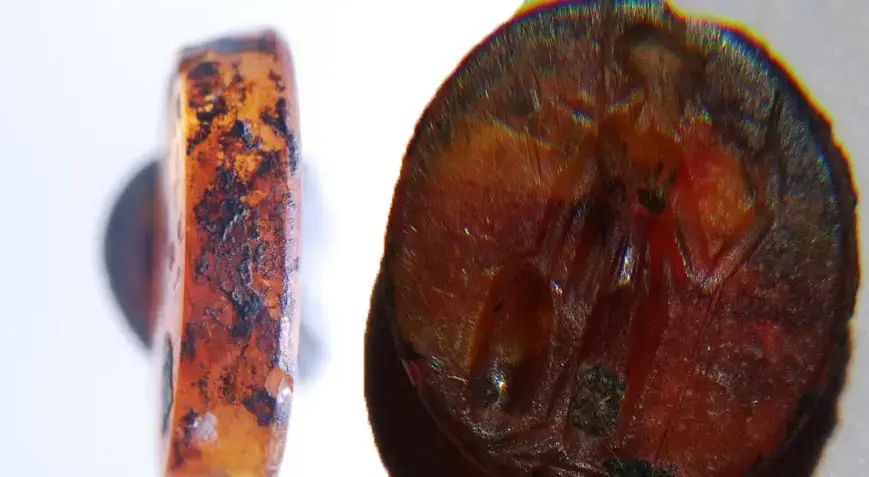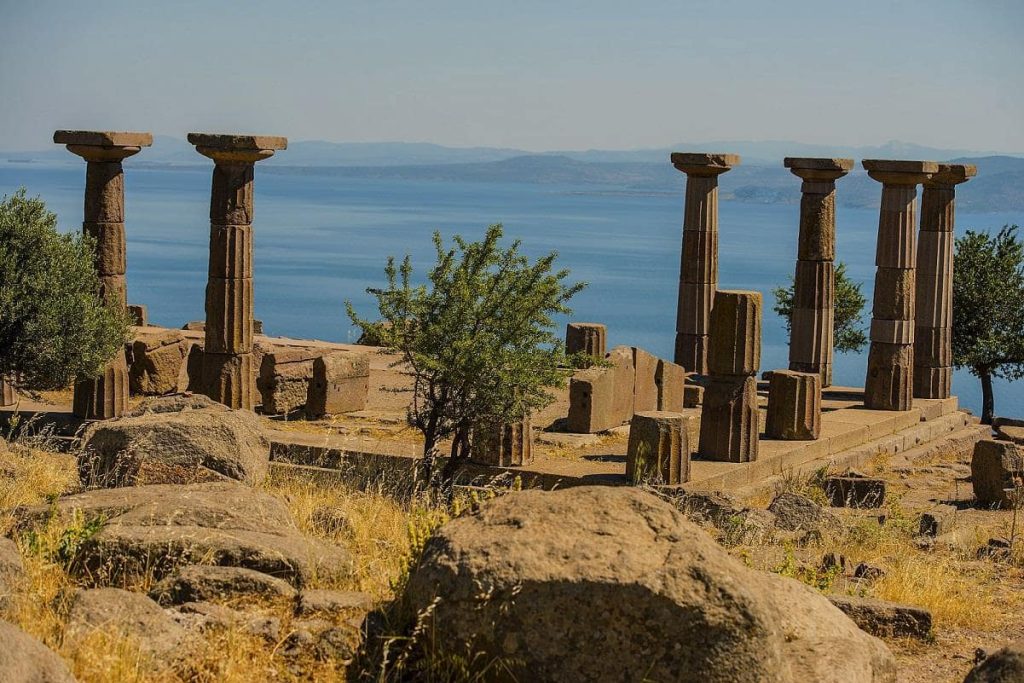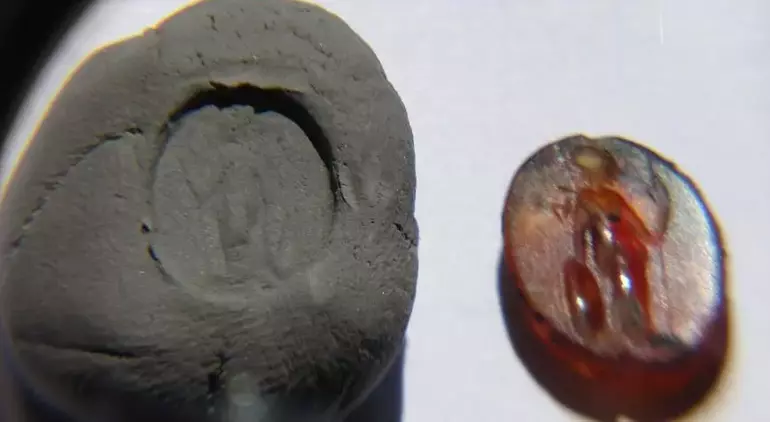
Archaeologists discover a ring stone in Assos with the image of Athena, the main goddess of the city
During the excavations in the ancient city of Assos, a ring stone from the Roman Imperial Period with the depiction of Athena, the main goddess of the city, was found.
The ring stone was found in the city’s Xenedochion structure.
The ancient city of Assos was founded on an extinct volcanic hill in the Ayvacık district of Çanakkale.
The city is an important settlement where Aristotle founded a school of philosophy.
📣 Our WhatsApp channel is now LIVE! Stay up-to-date with the latest news and updates, just click here to follow us on WhatsApp and never miss a thing!!
The Temple of Athena, located at the highest point of the city, is one of the symbols of Assos.

Archaeological excavations in the city of Assos are being carried out by a team of 20 people under the leadership of Prof. Dr. Nurettin Arslan, a faculty member of Çanakkale Onsekiz Mart University (ÇOMÜ) Faculty of Humanities and Social Sciences, Department of Archaeology.

Prof. Dr. Nurettin Arslan said that the 1700-year-old ring stone depicting ‘Athena’, the main goddess of the city, belonged to a prominent person in the city and was used as a seal.
Arslan said, “During the studies we conducted this year, a ring stone made of a precious stone was found in the Xenedochion structure. On this ring stone, Athena, who is actually the main goddess of the city, is depicted standing. As far as we know, such stones are very common especially during the Roman period, but they were also used before and after. We can say that it belonged to a prominent person in the city and was used as a seal. We estimate that it dates to the 2nd-3rd century AD. We can suggest a date of 1600-1700 years. This of course determines the identity of the people. It can be said that in ancient times such seals were used instead of today’s signature since earlier ages.”
Cover photo: DHA
You may also like
- A 1700-year-old statue of Pan unearthed during the excavations at Polyeuktos in İstanbul
- The granary was found in the ancient city of Sebaste, founded by the first Roman emperor Augustus
- Donalar Kale Kapı Rock Tomb or Donalar Rock Tomb
- Theater emerges as works continue in ancient city of Perinthos
- Urartian King Argishti’s bronze shield revealed the name of an unknown country
- The religious center of Lycia, the ancient city of Letoon
- Who were the Luwians?
- A new study brings a fresh perspective on the Anatolian origin of the Indo-European languages
- Perhaps the oldest thermal treatment center in the world, which has been in continuous use for 2000 years -Basilica Therma Roman Bath or King’s Daughter-
- The largest synagogue of the ancient world, located in the ancient city of Sardis, is being restored











Leave a Reply